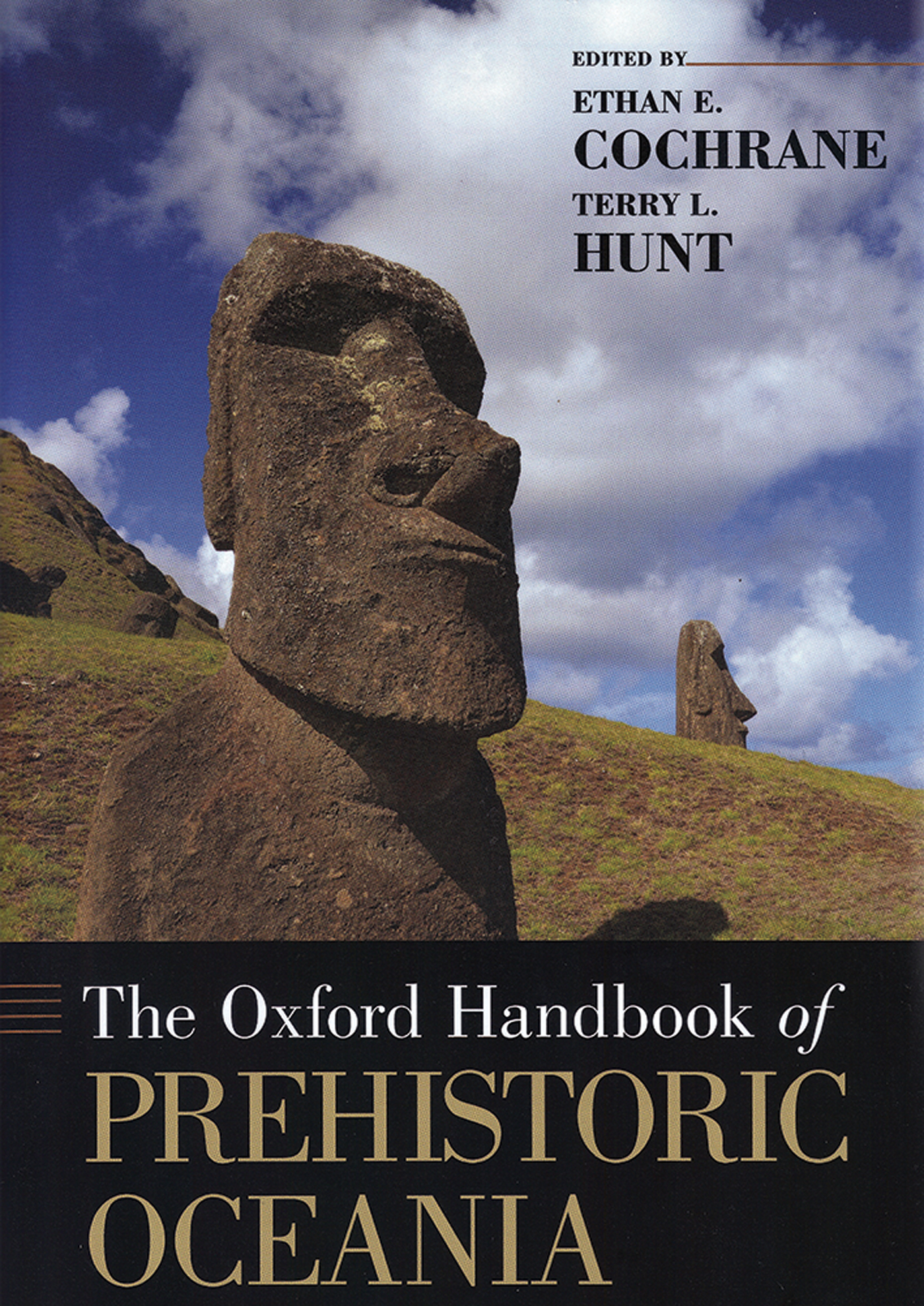
Reading this comprehensive review of the archaeology of Oceania, provided by scholars with 20–30+ years’ experience in the field, is a real pleasure. Coverage of such a large region is difficult, given page limitations, and most of the 21 chapters in this book are 20 pages or fewer. Summarising areas does, however, have its benefits, as writers with substantial experience can focus on the key issues that have arisen over time in their work and point to puzzles or future directions. This volume covers archipelagos and islands from Island Southeast Asia and New Guinea, through the Western Pacific to Hawaiʻi, Easter Island and New Zealand, and includes Micronesia, which often gets left out of such overviews. Regrettably, the Solomon Islands, at the boundary between Near and Remote Oceania, are not covered, which is unfortunate given the insight they can provide into the nature of colonisation beyond the Solomons into Remote Oceania, possibly including sailing capability. I cannot review each chapter in detail so will comment on a few, although I will say that I enjoyed them all and found them generally to be both highly valuable summaries for those new to the area, and a source of thoughtful insight for fellow researchers working in the region.
Many readers will be familiar with the Lapita archaeological culture and its iconic ceramics that appear in many first-year world prehistory texts and that are associated with the extraordinary story of the settlement of the Western Pacific. Readers may find the chapter by John Terrell on Lapita somewhat puzzling as it does not summarise current knowledge, but focuses on a critique of a descriptive model advanced by the eminent prehistorian Roger Green in 1991. This model proposed that Lapita was the result of interaction between new people and ideas coming out of Island Southeast Asia and ultimately Taiwan, and the indigenous ‘Melanesian’ people of the Bismarck Archipelago. Terrell probably has a point, in that the model is rather simple and not explanatory, and could apply to most situations around the world. Terrell spends some time discussing the philosophy of archaeological explanation, and I think his observations on how such explanation works in practice are apropos. He concludes with an historical ‘scenario’ to account for Lapita development, which in my opinion gets us no further and if anything is more general than that proposed by Green. Readers will have to look elsewhere for overviews of Lapita, but the bigger issues of archaeological theory and method around culture, ethnicity, ‘race’ and language are at the heart of this debate and can be usefully studied by reading this chapter and the references therein.
Most of the archaeology of Oceania has been conducted by Anglophone researchers, yet much of the archaeology of the French Pacific is published in French by archaeologists from France and its Pacific colonies. Foremost among these today is Christophe Sand, living and working out of New Caledonia. His excellent chapter on New Caledonia provides English readers with an up-to-date summary of its very interesting and complex archaeology. He concludes with a discussion of an issue that arises in many of the chapters in the volume: the relationship of archaeology and archaeologists with indigenous populations of the Pacific. In the case of New Caledonia this is sharpened by the colonial status of the islands and the politics of the independence movement.
One of the perennial issues in Pacific archaeology is the timing of island settlement. Unlike the archaeology of most of the world, in the Pacific we may appear preoccupied with whether island settlement is a few hundred years older or younger, but given our short timescale, such small differences can have important implications for the rate of cultural change or the speed of settlement process. Reith and Cochrane provide an overview of chronological evidence for Oceania settlement, concluding with a review of methodological improvements in dating developed over the last few decades in the Pacific. One issue that they do not discuss is that of problems created by flat areas in the calibration curve, which often seem to lie at crucial points of interest. Development of U/Th coral dating, which gives very precise dates, will, as discussed, help with this problem in the tropical Pacific.
An area of general interest, given the widespread use of Pacific models of political organisation and development, is the comparative study of Pacific chiefly societies. The region reminds us that simple neo-evolutionary models or evolutionary theory can be challenged by the archaeology. Most of the chapters deal in one way or another with the topic. Burley and Addison's chapter on Samoa and Tonga makes for an interesting study. The tiny island of Tongatapu and its even smaller neighbours are contrasted with the islands of Samoa, some three times larger. Tonga is described in late prehistory as a near state or a maritime empire, while in Samoa we see only limited evidence of intensification and comparatively limited hierarchy and consolidation of power. In Tonga and in Hawaiʻi, as described by Patrick Kirch (Chapter 17), the increasing use of oral tradition helps us understand the importance of agency in the formation of these societies.
In addition to the archaeology chapters we have several contributions dealing with important related fields. Andrew Pawley offers a very brief but useful summary of Pacific linguistics. The recently deceased and much-missed geologist Bill Dickinson provides an introduction to coastal landforms in the Pacific, which informs on sea-level change and its effect on archaeological visibility. The final and very interesting chapter is on seafaring by Atholl Anderson. In it he challenges what he calls the ‘traditionalist’ model of Pacific seafaring. This is part of an ongoing debate that he has had with the other authority on the topic, Geoff Irwin. Readers should look at Irwin and Flay (Reference Irwin and Flay2015) and most recently Irwin et al. (Reference Irwin, Johns, Flay, Munaro, Sung and Mackrell2017), which discuss early canoe remains from New Zealand.


